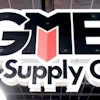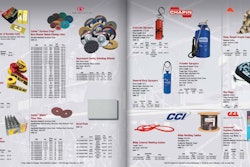
 These past few weeks, nearly a dozen of companies on Industrial Distribution's 2015 Big 50 List have reported their financials for their most recent completed quarter. For most, that's Q3, finishing at the end of September. But no matter what stage of their fiscal year, the theme has been the same: Gloomy.
These past few weeks, nearly a dozen of companies on Industrial Distribution's 2015 Big 50 List have reported their financials for their most recent completed quarter. For most, that's Q3, finishing at the end of September. But no matter what stage of their fiscal year, the theme has been the same: Gloomy.
It's fitting that Halloween is this weekend.
From Oct. 13 through Wednesday, 11 of ID's Big 50 companies have reported quarterly sales & earnings, and we've reported on the financials of a handful of other large industrial manufacturers. For the vast majority, the message is very similar – sales and profit are flat or down due to low oil prices and currency headwinds.
The gloominess began on Oct. 13 with Fastenal (No. 12 on Big 50) reporting a Q3 sales increase of just 1.5 percent to an amount identical to Q2 while announcing a third CEO change in a span of 11 months. It's Q3 profit was a 2.4 percent increase from last year, and a 2.8 percent decrease from Q2. Fastenal's September sales were down 0.3 percent from last year, and 1 percent from August. This continued a downward trend as the company's 2015 daily sales growth has decreased in eight out of nine months this year.
Fastenal CEO perhaps summed it up best when earlier this month he said, "The industrial environment's in a recession. I don't care what anybody else says."
Free Whitepaper: Forecasting the Impact of Mass Price Changes on Profits
Grainger (No. 3) reported its Q3 on Oct. 16, posting a 13.4 percent profit drop year-over-year and 1.2 percent sales decrease, and another lowered outlook for the remainder of 2015. Motion Industries' (No. 10) Q3 sales were down 4 percent from last year, with operating profit down 5.4 percent.
WESCO International (No. 5) and Lawson Products (No. 39) reported their Q3 financials on Oct. 22. WESCO's sales were down 7.4 percent year-over-year and had a 21.4 percent profit drop. Lawson had a 5.2 percent sales decrease.
MSC Industrial (No. 14) , Anixter (No. 7) , and Airgas (No. 9) all reported their quarterly earnings on Tuesday, and it was more of the same. At MSC, Q4 sales were identical to last year's, while profit slipped 6.8 percent. Anixter posted a 3.6 percent sales gain in Q3, but when not including acquisition impacts, organic sales were up only 0.7 percent. And at Airgas, Q2 sales were down 1.2 percent from last year, while profit was identical to last year.
Applied Industrial Technologies (No. 16) reported Wednesday that Q1 sales were down 8.6 percent from last year, and profit sunk 16.5 percent.
A few companies, like Bossard (No. 26) and EIS Inc. (No. 23) actually posted sales increases, but they were primarily due to acquisitions as core sales decreased.
Here are comments given some Big 50 companies within their most recent quarterly financial release:
Grainger CEO Jim Ryan: "Our results reflect the challenging industrial economy in North America. While we remain confident about our ability to gain market share, we are expecting continued revenue deceleration given recent feedback from our customers and suppliers. A number of large customers have announced layoffs, and there are indications of extended year-end holiday shutdowns. We have begun the process of aggressively adjusting our cost structure to reflect the weaker economic environment."
WESCO International CEO John Engel: "Our third quarter sales declined 7 percent reflecting continued foreign exchange headwinds and weakness in the industrial market and certain non-residential construction sectors. We expect reduced demand in commodity-driven end markets and foreign exchange headwinds to continue into 2016."
MSC Industrial CEO Erik Gershwind: "Our flat fourth quarter sales reflected strong execution in the face of a difficult and deteriorating environment. The prolonged impact of the drop in oil prices, the strong U.S. dollar and foreign exchange headwinds are all negatively impacting broader manufacturing activity."
Applied CEO Neil Schrimsher: "Our first quarter results reflect the continued impact of reduced demand in many industrial end markets, most notably oil and gas, as well as headwinds from foreign currency translation."
Pretty morbid stuff.
Of course, there are exceptions to this trend, as some distributors may have experienced solid sales and profit gains this past quarter. Some have continued to make acquisitions. But looking at the market as a whole, it's been a dark month.
Distributors certainly aren't the only ones feeling the current market effects. Bearings manufacturer SKF had a 12 percent Q3 profit decrease year-over-year, and said more cost-savings actions are needed beyond the company already cutting 1,500 white collar workers. 3M posted a 5.3 percent Q3 sales decrease and flat profit, adding that it will cut 1,500 jobs. Parker Hannafin posted a Q1 sales decrease of 12.3 percent, while profit plummeted 30.4 percent.
There are a number of factors negatively effecting the industrial economy. As evidence of weakened demand, August manufacturing technology orders were down 10 percent from July, and more than 20 percent from last year. U.S. manufacturing production fell for a second straight month in September, declining 0.1 percent, following a 0.4 percent drop in August. Construction Market Data reported that September non-residential construction starts decreased 18 percent from August.
If you're a small, local industrial distributor, you most likely don't have to deal with currency headwinds. And if you're a small distributor who doesn't sell much to oil & gas customers, you're feeling even these effects even less. But for everyone else, the industrial environment is as tough as it's been since the 2008 recession.
Speaking of oil, recent reports suggest today's low prices are here to stay for awhile. BP, which had a miniscule Q3 profit compared to last year, said it expects prices at or below $60 per barrel through 2017, and that they could remain below $70 into the early 2020s.
My wallet has enjoyed cheap oil this past year, but it's been bad news for industrial distributors.
 Just as cheap oil is expected to continue, so is the strength of the U.S. dollar. China continues to reduce its interest rate to boost its economy and slow deflation, and Europe's stimulus plan is expected to continue into late 2016. This makes the U.S. more attractive to investors, and would cause the dollar to rise further.
Just as cheap oil is expected to continue, so is the strength of the U.S. dollar. China continues to reduce its interest rate to boost its economy and slow deflation, and Europe's stimulus plan is expected to continue into late 2016. This makes the U.S. more attractive to investors, and would cause the dollar to rise further.
So what are industrial distributors to do?
If the oil and dollar forecasts play out as expected, distributors feeling these effects can't just wait things out until market conditions improve. Unless they make drastic cost-savings measures, they simply can't make it that long.
Is it time for industrial distributors to make fundamental changes in how they do business and who they do it with?




















